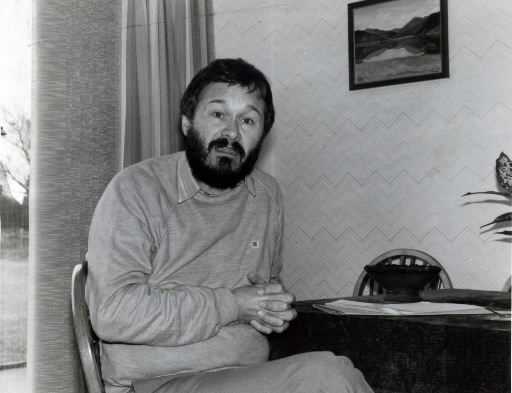6. The ‘Nuclear Village’
Mar. 25, 2013
Chapter 5: Britain and France
Part 1: The Rough Road to Nuclear Supremacy
Part 1: The Rough Road to Nuclear Supremacy
Just to the south of Sellafield lies a small town known locally as the "nuclear village." Its real name is Seascale, and it is home to two thousand people, most of whom are employed at the Sellafield complex or in related businesses. Dr. Barrie Walker was born in Seascale and spent his childhood there. Ten years ago, out of a desire to live an unhurried life in natural surroundings, he returned to open his own practice in the village.
What he found in Seascale soon shattered this illusion. As he began to examine and treat the townspeople he noticed a disproportionate number of leukemia and cancer cases amongst his patients.
According to a survey he has carried out, there have been eleven cases of leukemia in the village since 1955. This is ten times the national average in Britain, where leukemia occurs at a rate of once in every 100,000 people. Moreover, the cases are concentrated mainly in the 1960s and 1970s. This corresponds to the period of expanded production at the nuclear fuel reprocessing plant and the occurrence of a number of accidents. Dr. Walker believes there is a definite connection.
In 1983, Yorkshire Television produced a special documentary, "Windscale: the Nuclear Laundry," which dealt with the issue of radioactive discharge from the nuclear power plant. Thanks to this, the nuclear village of Seascale became known all over the country. The following year, a government committee set up to investigate the situation acknowledged that, up until 1983, there had been seven cases of leukemia. It denied, however, any connection with the plant at Sellafield, insisting that only a small quantity of radiation had been released.
Dr. Walker strongly disagrees with this conclusion. "The committee believed all the data Sellafield submitted to them, most of which was actually extremely suspect. The residents here don't have an ounce of faith in their findings."
The doctor has been criticized by the plant management and local union bosses, but believes he has the backing of the local residents. Since he publicized details about the high incidence of leukemia in the area, parents have stopped letting their children play at the beach. "They put out all this P.R. about the plant being safe, but even the employees don't take their families to the beach. It's obvious they don't trust Sellafield, so how can they expect anyone else to?"
Prior to meeting Dr. Walker, we went on a tour of the complex. The huge site contained an impressive array of nuclear facilities: the world's first magnox reactors producing plutonium for military purposes, the fuel treatment plant thought by the local residents to be the main "culprit " the gas-cooled reactor closed down nine years previously, the storage facilities for radioactive waste—the complex was like a nuclear department store.
It is forty years since the plant began operations to process plutonium for military purposes. The development of nuclear reprocessing since the war has reflected the increasingly diverse ways in which atomic energy has come to be used throughout the world. As the number of nuclear power facilities has grown, Sellafield has placed increasing emphasis on the establishment of facilities for reprocessing used nuclear fuel. At the present time, a new facility is being built which, it is hoped, will be capable of reprocessing twelve hundred tons of fuel annually.
There are only two facilities for the commercial reprocessing of used nuclear fuel rods in the world; Sellafield is one and the other is in France. Used fuel will be transported from nuclear power plants in seven countries to Sellafield for reprocessing; ten-year contracts have already been signed in the hope that the nuclear department store will be able to keep a lid on the world's nuclear waste.
Dr. Walker acknowledges the importance of the complex to the local economy, but at the same time he is determined that, whatever the financial benefits, the health of the people of Seascale and the surrounding districts must not be sacrificed. Dr. Walker's fears are not unfounded; the 1980s have seen a steady increase in cancer in Seascale, including eight cases of malignant lymphatic tumors, as well as cancer of the bladder, kidney, and uterus.
"The leukemia and cancer here can only be thought of as legacies from Sellafield," he said. "As a doctor I'm charged with saving lives, so I feel it my duty to continue speaking out on this matter." His concern for the environment and the local people left a lasting impression on us as we left the nuclear village.








